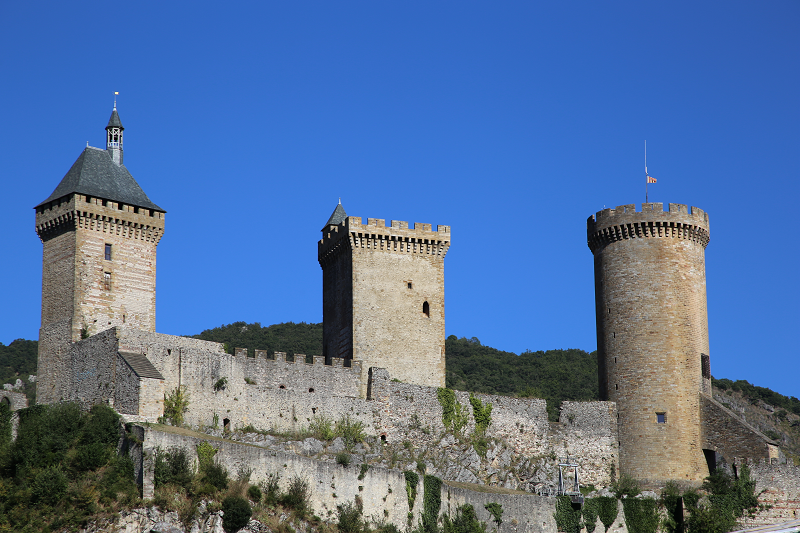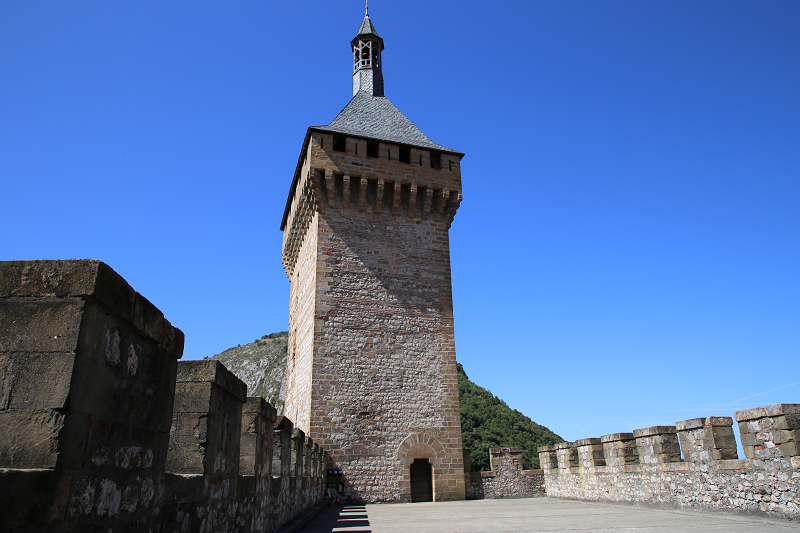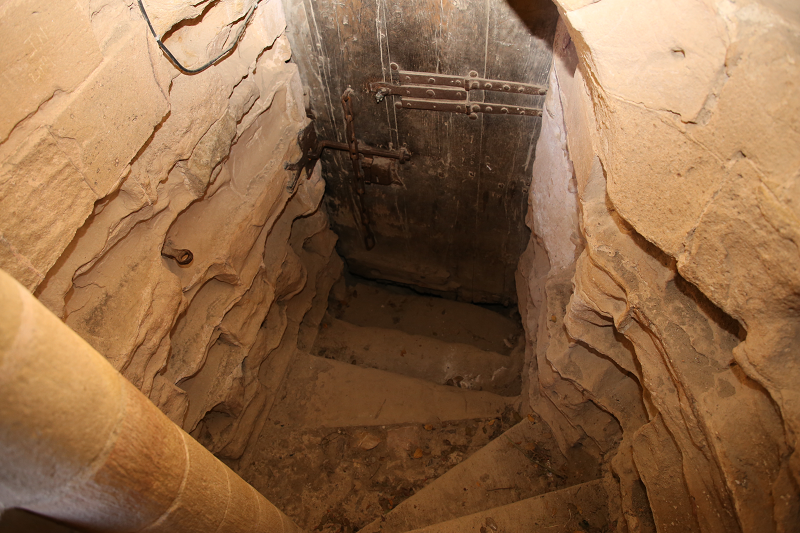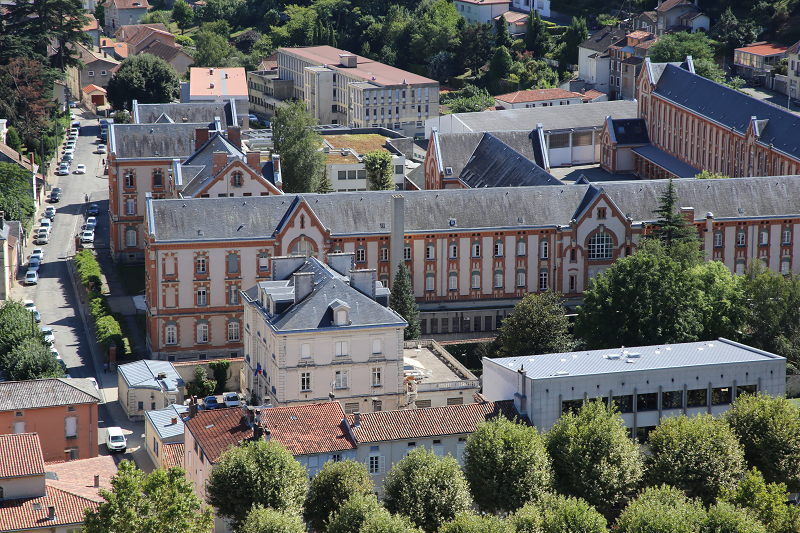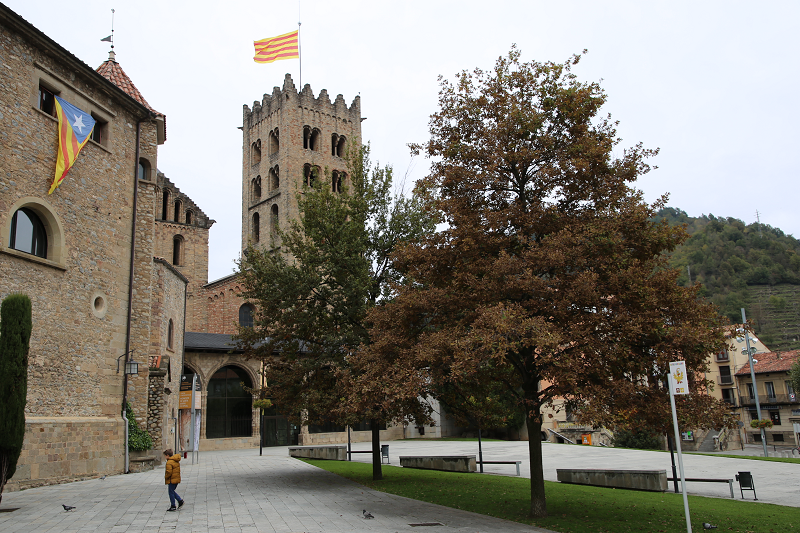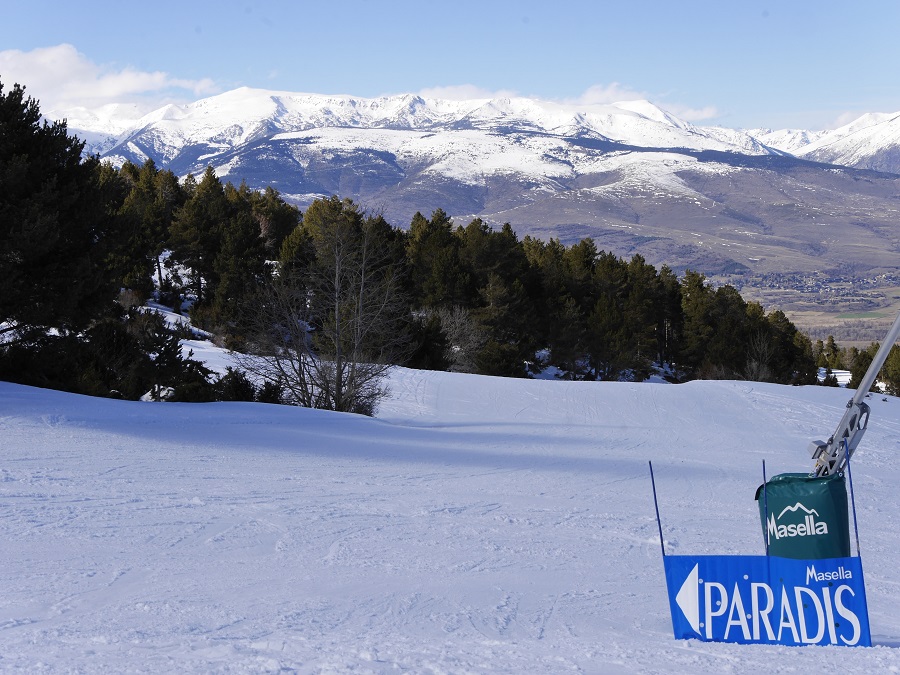
Ax-les-Thermes is a city in the south of France (Ariege department, French Pyrenees), located at an altitude of 720-740 m above sea level. The population of the city in 2015 was 1,230 people.
The city is located at the intersection of three valleys – La vallée de la Lauze, l’Oriège and l’Ariège. This location makes it ideal for hiking – both in winter and summer.
At 3.5 km from the city there is a small lake (lac de Campauleil) or, as it is also called, Lake d’Orgeix, with a small dam on the River d’Orgeix (height 814 m above level). The Orgeix castle was built here (château d’Orgeix). It belonged to a family of marquis by the name of Thonel d’Orgeix, who owned the lands around Ax. According to a legend, the head of the family, Jean-François Joseph de Thonel d’Orgeix received the title of Marquis in 1817. After that, the construction of the castle began, which was carried out in several stages on the site of an old forge (it was owned by the ancestors of the Tonel de Orzhey family). There are 40 rooms in the castle, and balls and masquerades were often held there.
The only heir to the castle, the last (fifth) Marquis Jean de Orzhey, was a passionate man and a great adventurer. He won the bronze medal at the Olympic Games in London in 1948, was known in French cinema under the pseudonym Jean Pâqui, as well as the pilot who drove vintage cars. In 2006, at the age of 85, he died in a car accident. Soon after, the castle became the property of the state.
In 2013, the French national energy company EDF began to build a dam on the lake. Because of this, the lake, in which trout and perch were once found, was drained and fishing stopped.
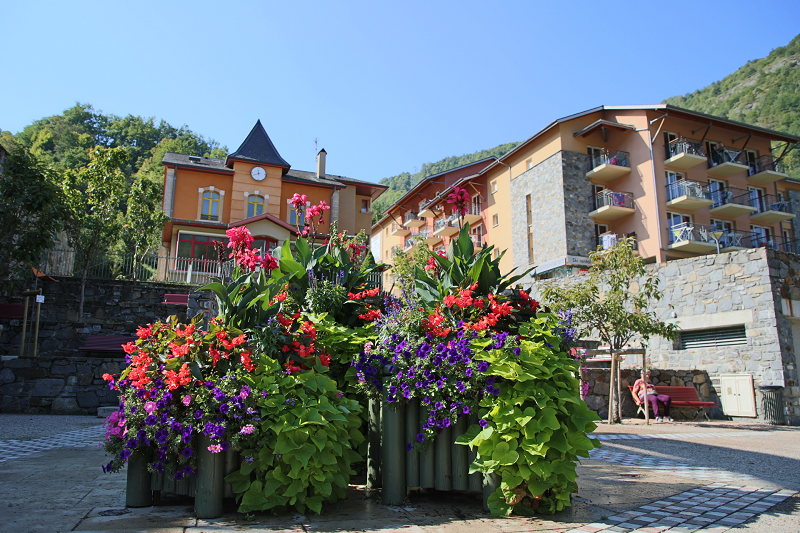
However, it is worth returning back to the city of Ax-les-Thermes. In the 1900s, in connection with the construction of the railway, this city became a real tourist destination. Why? There are several reasons for this.
Sights and what to see
In 1956, a ski resort was opened here covering about 75 km of slopes (red and mostly black). There are three ski areas in Ax: the first mainly contains beginners slopes, the second is the zone for children (at the very bottom and at the very top). And, finally, a zone for free-riders.

The lifts in Ax-les-Thermes operate all year round and allow you to do mountain biking in spring, summer and autumn. In addition, for hikers and lovers of hiking, new mountain routes opened in 2017.
For lovers of summer sports: near the city center there are several tennis courts and mini golf centres.
However, the main attraction of the city is its hot springs; the hottest spa in the Pyrenees. The temperature of the sources reach 76-78 degrees Celsius. They are rich in silicon dioxide, sodium and especially hydrogen sulfide. Sulfur produces a peculiar and distinctive odor.
The natural temperature is a very important characteristic in terms of anti-bactericidal properties. This water can burn. The water is absolutely natural, therefore it is 100% curative. It is recommended for patients with sciatica, rheumatism and some respiratory tract infections. It has zero bacteria. And the composition of the water has not changed for many centuries.
According to the established tradition, every year on the day of San Joan (the celebration of the summer solstice), tourists come to Ax-les-Thermes to take a hydrogen sulfide bath amid burning torches.
These natural water sources were known about even in Gallo-Roman times. The King of Louis IX during the Crusade decided to create a hospital here to treat lepers disease. In 1260, with the blessing of Louis IX, Roger IV de Foix, count of Foix, built the Ladrov pool (Bassin des Ladres) near the hospital of Saint Louis for this purpose.
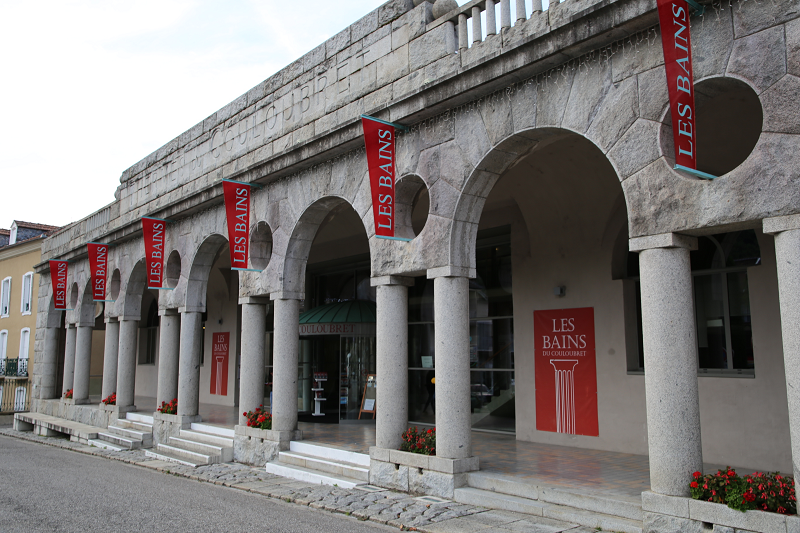
Until the mid-18th century, Ax-les-Thermes’ spa or Barry des Bains was concentrated around Bassin des Ladres. It was located next to the hospital and the adjoining chapel called “Notre Dame du Bain” (Notre Dame du Bain).
For centuries, thermal water was widely used for scalding pigs, preparing hot dishes, and even brewing coffee (when boiled, the unpleasant smell of the water disappears).
Natural parks
Next to Ax-les-Thermes is the 708.32 hectare state forest park. This is a natural area of ecological, faunistic and floristic interest (Zone naturelle d’intérêt écologique, faunistique et floristique, ZNIEFF). You can spot wild boars, marmots and martens, the bearded man (a bird from the family of hawks), wood grouse and black woodpeckers.
Less than 10 km from Ax-les-Thermes is the national park of Orlu, which covers an area of 4000 hectares. The wood-grouse, the golden eagle and the gray partridge are found here.
Architecture and city attractions
The highlight of Ax-les-Thermes is the presence of fountains with thermal water – for example, the Fontaine des Neiges, Coustou, Couzillou, Canon, and the pool Le Bassin de L’Axéenne. In essence, these are big foot baths. They opened in 2016 at Place Saint-Jérôme, next to the Saint-Jérôme d’Ax-les-Thermes church and face the main shopping street and are intended for the general public.

A few words about the church. The first stone was laid on April 24, 1607 – in the year of the foundation of the brotherhood of the blue penitent sinners. The brotherhood of repentant sinners arose in Genoa in the fourteenth century. A century later, they appeared in the cities of Provence. Brotherhoods united Catholic parishioners, who differed in the color of their robes, depending on their responsibilities. The clothes were a robe with a hood and a belt. White clothes were worn by those who cared for the sick, black ones by those who were engaged in burial, the red ones were worn by those who looked after orphans, and blue ones by those who welcomed travelers, prisoners and tried to free slaves.
The church of Saint-Jérôme was built in a part of the city, destroyed by a violent fire in 1586. The construction was funded by donations. It was consecrated on the day of St. Vincent, the patron saint of the city, on January 22, 1608. In 1705, 1831, 1906 and 1907, the building was renovated and has a rectangular shape. Since 1990, the chapel serves as a venue for exhibitions.


